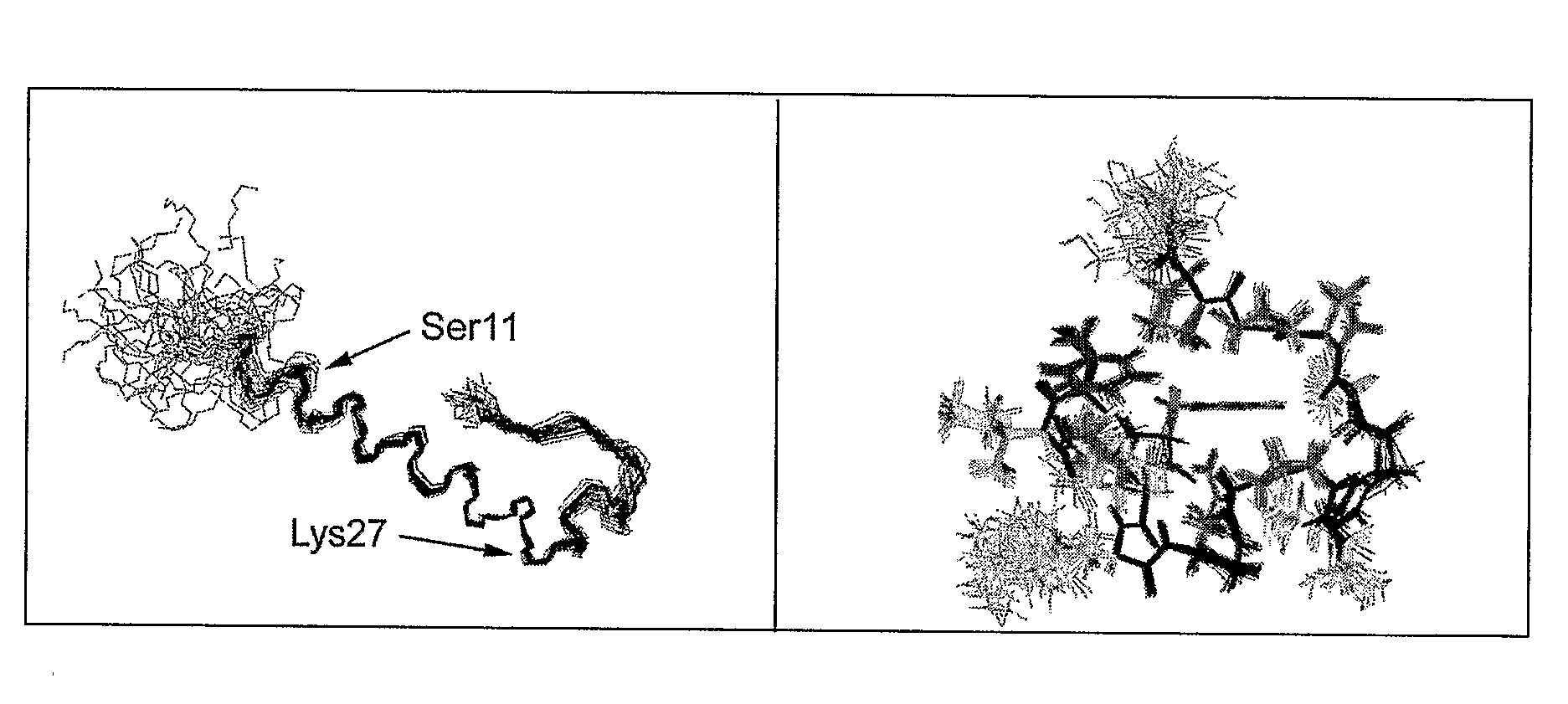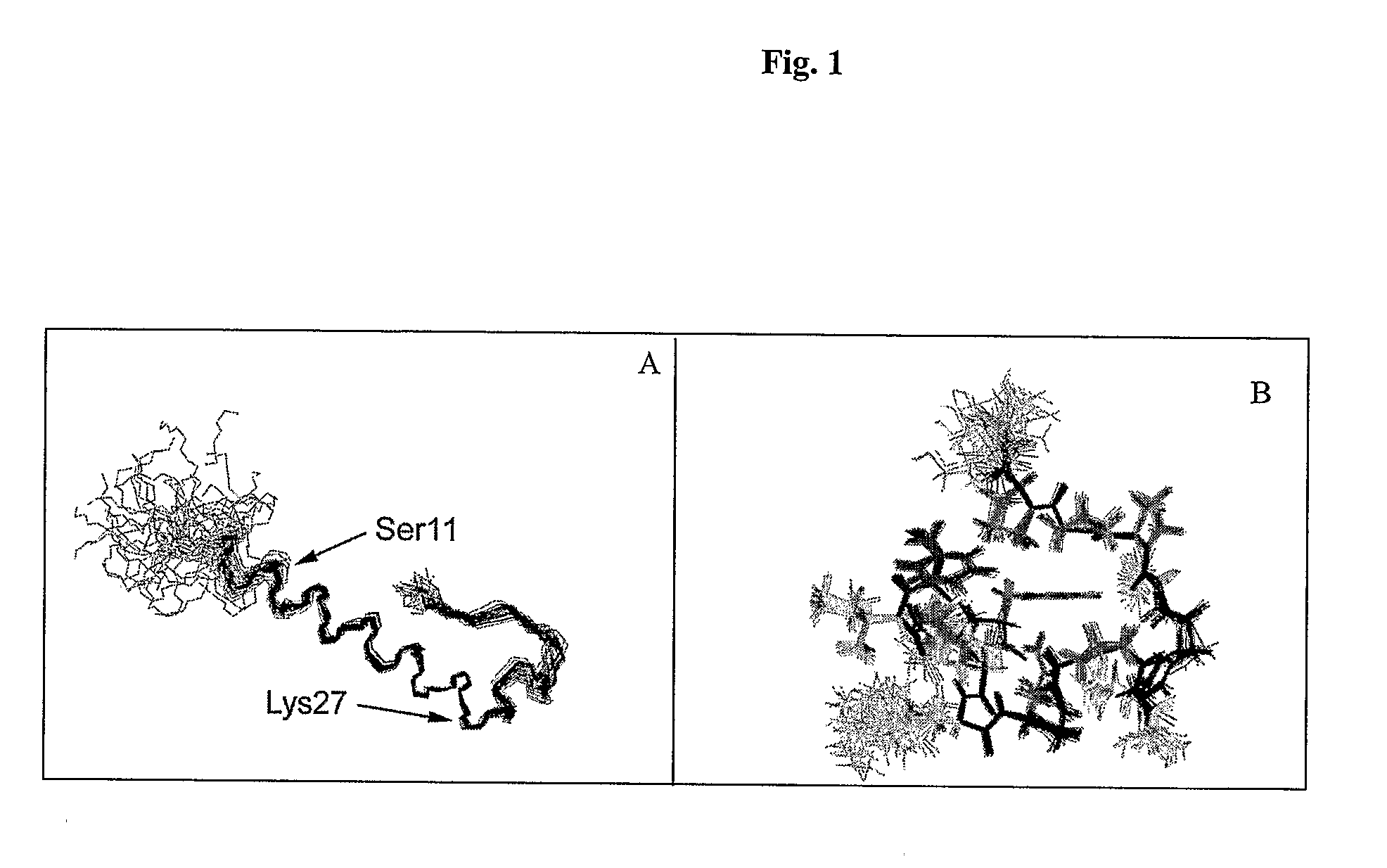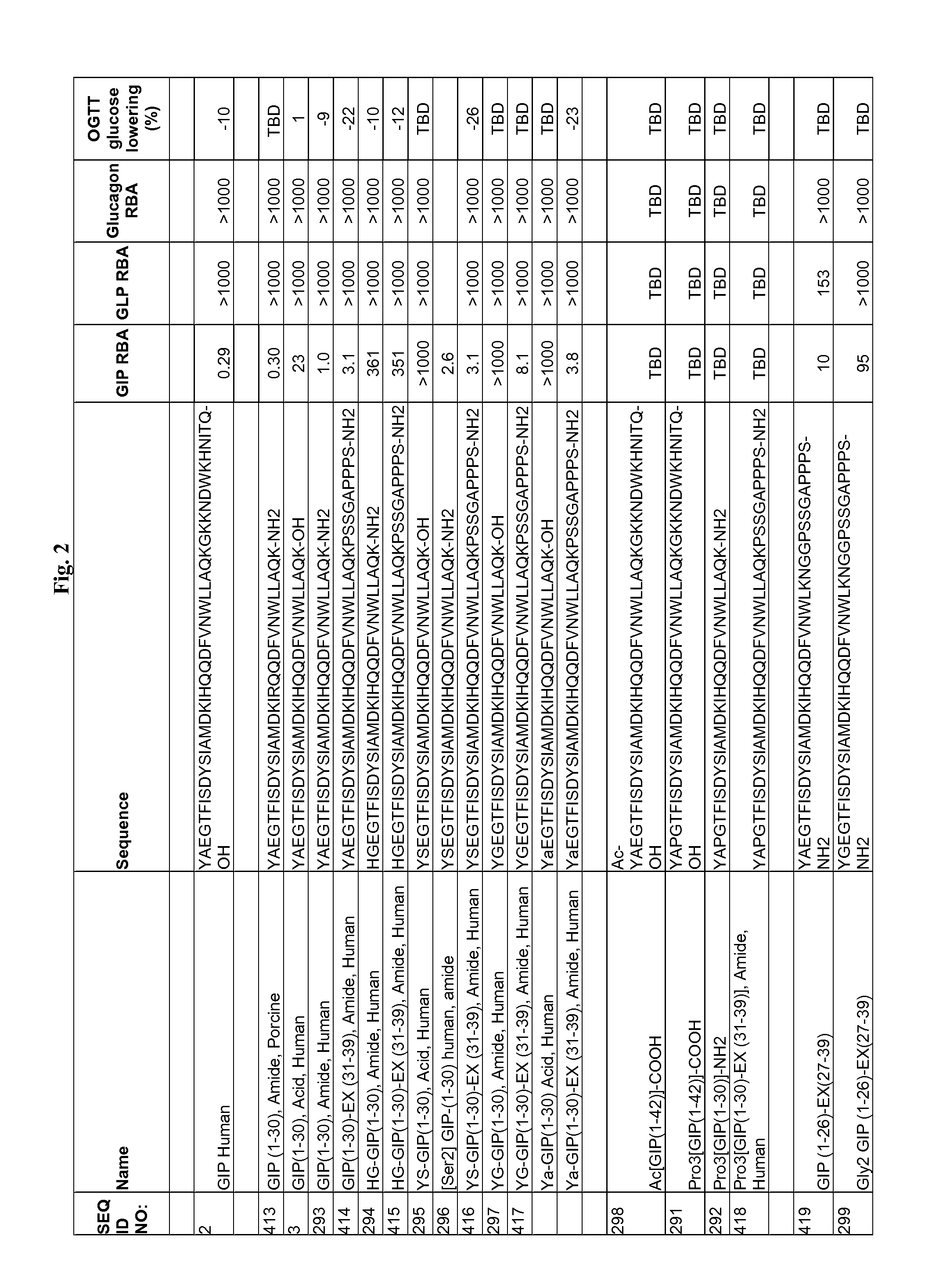Gip analog and hybrid polypeptides with selectable properties
a hybrid polypeptide and gastric inhibitor technology, applied in the field of peptide chemistry and pharmaceuticals, can solve the problems of lipid metabolism, no clear evidence of effect, and clinical use of gip has not been significantly advanced, so as to reduce gastric emptying, increase insulin secretion, and reduce plasma glucos
- Summary
- Abstract
- Description
- Claims
- Application Information
AI Technical Summary
Benefits of technology
Problems solved by technology
Method used
Image
Examples
example 1
Preparation of GIP Polypeptides
[0515]Peptides of the invention may be assembled on a Symphony peptide synthesizer (Protein Technologies, Inc.) using Rink amide resin (Novabiochem) with a loading of 0.43-0.49 mmol / g at 0.050-0.100 mmol or a pre-loaded Wang Resin (Fmoc-Tyr(tBu)-Wang resin) 0.63 mmol / g (Novabiochem). Fmoc amino acid (5.0 eq, 0.250-0.500 mmol) residues are dissolved at a concentration of 0.10 M in 1-methyl-2-pyrrolidinone. All other reagents (HBTU, 1-hydroxybenzotriazole hydrate and N,N-Diisopropylethylamine) are prepared as 0.55 M dimethylformamide solutions. The Fmoc protected amino acids are then coupled to the resin-bound amino acid using, HBTU (2.0 eq, 0.100-0.200 mmol), 1-hydroxybenzotriazole hydrate (1.8 eq, 0.090-0.18 mmol), N,N-diisopropylethylamine (2.4 eq, 0.120-0.240 mmol) for 2 hours. Following the last amino acid coupling, the peptide is deprotected using 20% (v / v) piperidine in dimethylformamide for 1 hour. Once peptide sequence is complete, the Symphony ...
example 2
Binding Assays
[0518]The GIP polypeptides of the invention may be tested in a variety of receptor, e.g. GIPR, GLP-1R, amylin receptor, binding assays using binding assay methodologies generally known to those skilled in the art. Such assays include those described herein.
[0519]Amylin binding assay: Evaluation of the binding of some exemplary compounds of the invention to amylin receptors may be carried out as follows in nuclueus accumbens membranes prepared from rat brain. Male Sprague-Dawley® rats (200-250) grams are sacrificed by decapitation. Brains are removed and place in cold phosphate-buffered saline (PBS). From the ventral surface, cuts are made rostral to the hypothalamus, bounded laterally by the olfactory tracts and extending at a 45° angle medially from these tracts. This basal forebrain tissue, containing the nucleus accumbens and surrounding regions, is weighed and homogenized in ice-cold 20 mM HEPES buffer (20 mM HEPES acid, pH adjusted to 7.4 with NaOH at 23° C.). Mem...
example 3
Mouse Food Intake Assay
[0530]The GIP hybrid polypeptides of the invention may be tested for appetite suppression in the mouse food intake assay and for their effect on body weight gain in diet-induced obesity (DIO) mice. The experimental protocols for the screens are described herein.
[0531]Female NIH / Swiss mice (8-24 weeks old) are group housed with a 12:12 hour light:dark cycle with lights on at 0600. Water and a standard pelleted mouse chow diet are available ad libitum, except as noted. Animals are fasted starting at approximately 1500 hrs, 1 day prior to experiment. The morning of the experiment, animals are divided into experimental groups. In a typical study, n=4 cages with 3 mice / cage.
[0532]At time=0 min, all animals are given an intraperitoneal injection of vehicle or compound, typically in an amount ranging from about 10 nmol / kg to 75 nmol / kg, and immediately given a pre-weighed amount (10-15 g) of the standard chow. Food is removed and weighed, typically at 30, 60, and 120...
PUM
| Property | Measurement | Unit |
|---|---|---|
| Fraction | aaaaa | aaaaa |
| Pressure | aaaaa | aaaaa |
| Electrical resistance | aaaaa | aaaaa |
Abstract
Description
Claims
Application Information
 Login to View More
Login to View More - R&D
- Intellectual Property
- Life Sciences
- Materials
- Tech Scout
- Unparalleled Data Quality
- Higher Quality Content
- 60% Fewer Hallucinations
Browse by: Latest US Patents, China's latest patents, Technical Efficacy Thesaurus, Application Domain, Technology Topic, Popular Technical Reports.
© 2025 PatSnap. All rights reserved.Legal|Privacy policy|Modern Slavery Act Transparency Statement|Sitemap|About US| Contact US: help@patsnap.com



